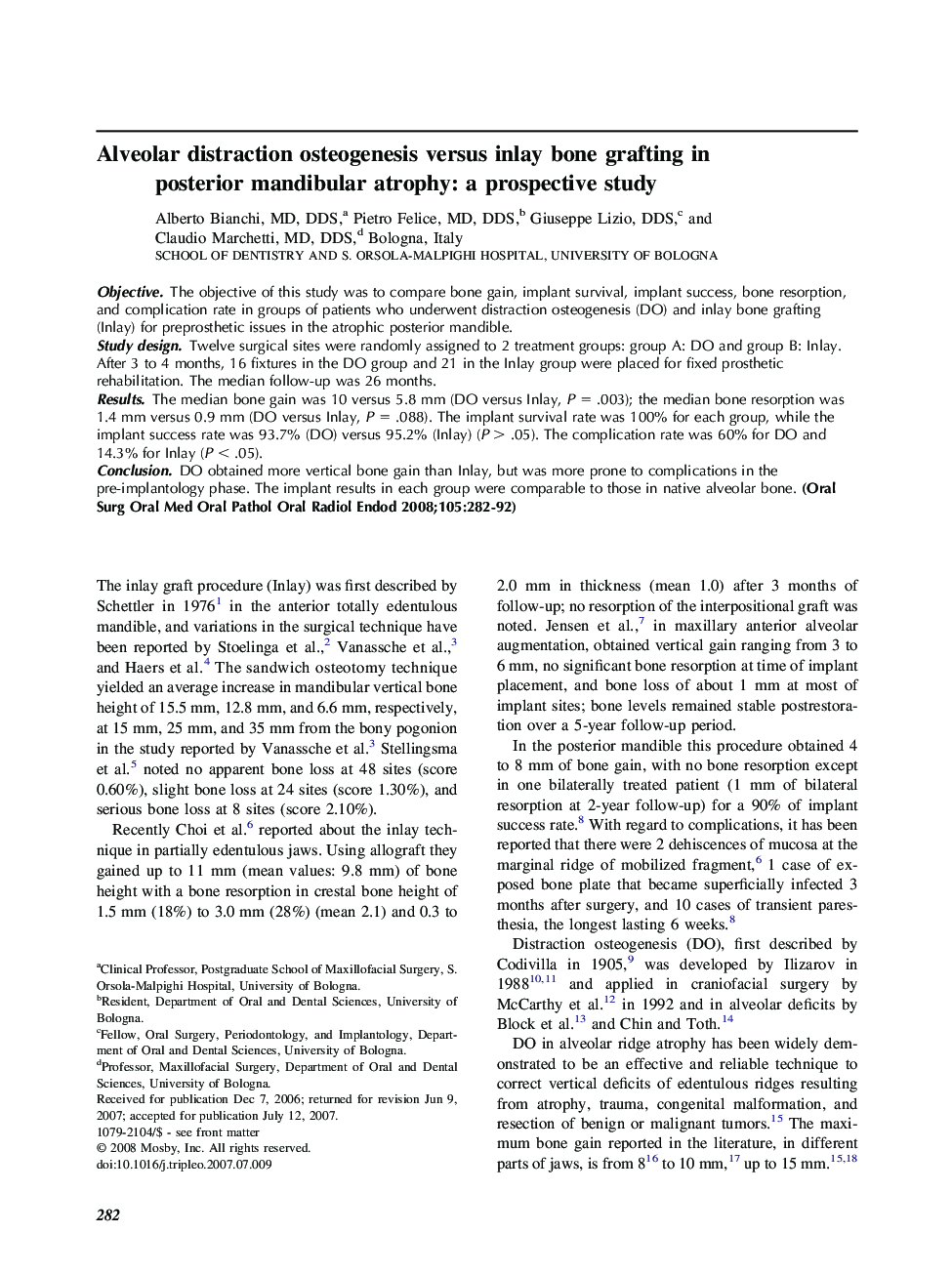| Article ID | Journal | Published Year | Pages | File Type |
|---|---|---|---|---|
| 3169014 | Oral Surgery, Oral Medicine, Oral Pathology, Oral Radiology, and Endodontology | 2008 | 11 Pages |
ObjectiveThe objective of this study was to compare bone gain, implant survival, implant success, bone resorption, and complication rate in groups of patients who underwent distraction osteogenesis (DO) and inlay bone grafting (Inlay) for preprosthetic issues in the atrophic posterior mandible.Study designTwelve surgical sites were randomly assigned to 2 treatment groups: group A: DO and group B: Inlay. After 3 to 4 months, 16 fixtures in the DO group and 21 in the Inlay group were placed for fixed prosthetic rehabilitation. The median follow-up was 26 months.ResultsThe median bone gain was 10 versus 5.8 mm (DO versus Inlay, P = .003); the median bone resorption was 1.4 mm versus 0.9 mm (DO versus Inlay, P = .088). The implant survival rate was 100% for each group, while the implant success rate was 93.7% (DO) versus 95.2% (Inlay) (P > .05). The complication rate was 60% for DO and 14.3% for Inlay (P < .05).ConclusionDO obtained more vertical bone gain than Inlay, but was more prone to complications in the pre-implantology phase. The implant results in each group were comparable to those in native alveolar bone.
